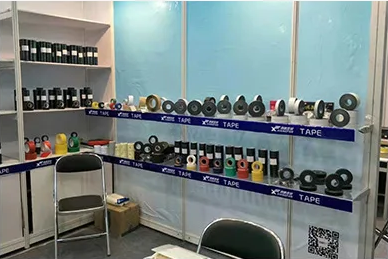Butyl Rubber Tape in China An Overview
Butyl rubber tape has become a significant product within the adhesive and sealing industries, thanks to its exceptional properties and versatility. In China, the production and consumption of butyl rubber tape have risen sharply, driven by various sectors including construction, automotive, electronics, and more. This article delves into the importance of butyl rubber tape in China, its applications, manufacturing processes, and current market trends.
What is Butyl Rubber Tape?
Butyl rubber tape is an adhesive tape made from butyl rubber, a synthetic rubber known for its excellent flexibility, weather resistance, and airtight sealing properties. This tape can resist moisture, UV light, and extreme temperatures, making it an ideal solution for bonding and sealing in a variety of harsh environments. It is often used for insulation, waterproofing, and as a vapor barrier in critical applications.
Growing Market Demand
The demand for butyl rubber tape in China has surged over the years. This increase can be attributed to China's rapid industrialization and urbanization, leading to a boom in construction activities. The construction sector, including residential and commercial developments, requires quality sealing products to ensure durability and efficiency in buildings. Moreover, as China invests in infrastructure projects, the need for high-performance sealing solutions—such as butyl rubber tape—has become paramount.
In addition to construction, the automotive industry plays a crucial role in the demand for butyl rubber tape. With the rise in automotive production and the push for more efficient and robust vehicles, manufacturers are turning to butyl rubber tape for sealing purposes in various car components to improve aerodynamics and enhance rust prevention.
Manufacturing Process
butyl rubber tape in china

The manufacturing of butyl rubber tape involves a series of steps, starting with the synthesis of butyl rubber. This is typically achieved through a polymerization process where isobutylene and a small amount of isoprene are combined under specific conditions. The resulting butyl rubber is then mixed with additives such as fillers, tackifiers, and stabilizers to enhance its performance characteristics.
Once the formulation is complete, the mixture undergoes a calendaring process, where it is flattened into sheets of desired thickness. These sheets are then coated with an adhesive, often on one side, and wound into rolls. Strict quality control measures are imposed at every stage of production to meet industry standards and ensure the tape's performance under various conditions.
Challenges and Opportunities
Despite its growth, the butyl rubber tape market in China faces challenges such as raw material price fluctuations and environmental regulations. The production process can generate waste and emissions, prompting manufacturers to adopt more sustainable practices. However, this creates an opportunity for innovation in producing eco-friendly alternatives and enhancing existing products.
Moreover, the ongoing development in technology opens doors for manufacturers to create advanced butyl rubber tapes with improved features like better adhesion, increased temperature resistance, and enhanced durability. The market is also witnessing a shift toward online platforms for distribution, making it easier for consumers to access different types of butyl rubber tape.
Conclusion
Butyl rubber tape has established itself as a critical component across various industries in China, driven by rising demands in construction and automotive sectors. With its exceptional properties and versatility, the product is poised for further growth. As manufacturers navigate challenges and embrace opportunities for innovation, the future of butyl rubber tape in China looks promising. This essential adhesive solution will continue to play a vital role in ensuring the longevity and efficiency of modern infrastructure and vehicles, underlining its significance in the evolving industrial landscape.
-
XIANGFAN Rubber Tape-Ultimate Solutions for All Your Insulation NeedsNewsJun.24,2025
-
XIANGFAN Rubber Tape-Protection for Industrial and Residential ApplicationsNewsJun.24,2025
-
XIANGFAN Rubber Tape: Superior Safety and Sealing for Demanding EnvironmentsNewsJun.24,2025
-
XIANGFAN Rubber Tape: Reliable Solutions for Every Electrical ChallengeNewsJun.24,2025
-
XIANGFAN Electrical & Industrial Tape: Powering Reliability Across IndustriesNewsJun.24,2025
-
XIANGFAN Electrical & Industrial Tape: Excellence in Every ApplicationNewsJun.24,2025
